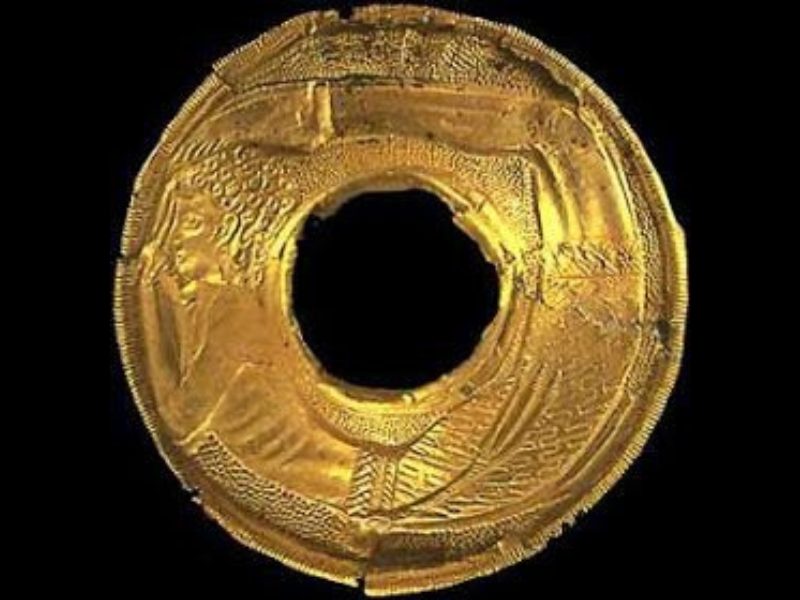Table of Contents
I. Introduction
The Minoan Civilization, flourishing in the Bronze Age on the enigmatic island of Crete, was not only known for its majestic palaces and advanced societal structures but also for its remarkable artisans. These skilled craftspeople, the Minoan Artisans, were the beating heart of Minoan culture, leaving an indelible mark on the fabric of ancient Mediterranean artistry.
Their influence extended beyond the shores of Crete, impacting the artistic landscapes of neighboring civilizations and setting standards in craftsmanship that resonated throughout the ancient world.
II. The Artistic Mastery of Minoan Artisans
Minoan Artisans excelled in a myriad of crafts, showcasing their versatility and ingenuity. They were renowned for their metalwork, pottery, and fresco painting, each discipline reflecting a unique blend of technical prowess and artistic vision.
Artifacts such as the Bee Pendant from the Chrisolakkos cemetery at Malia and the acrobat-depicted golden sword pommel are quintessential examples of their skill. These pieces not only display intricate craftsmanship but also embody the distinctive aesthetic sensibilities of the Minoan culture.
III. Levantine Influence and Metallurgical Expertise
The mastery of Minoan Artisans in metallurgy, particularly goldsmithing, was likely influenced by the skilled metallurgists of the southern Levant. This exchange of techniques and artistic visions led to a unique fusion in Minoan metalwork, characterized by both technical precision and artistic flair.
The intricate designs of their jewelry and weaponry, blending local and Levantine styles, underscored the Minoans‘ ability to assimilate foreign influences and create something uniquely their own.

IV. Spread of Minoan Artistic Influence
Minoan Artisans were not just creators within their insular world; they were also influencers and teachers whose artistic styles and techniques were adopted across the Aegean and beyond. Regions like the Cyclades and the Dodecanese Islands bore the mark of Minoan creativity in their pottery and frescoes, evident in the adoption of Minoan motifs and techniques.
Coastal settlements along Anatolia also reflected the Minoan aesthetic, showcasing the far-reaching impact of these Cretan craftsmen.
V. Minoan Artisans as Cultural Ambassadors
The Minoan Artisans played a role that transcended the boundaries of mere craftsmanship; they were cultural ambassadors of their civilization. Through their art, they exported not only their technical skills but also the Minoan philosophy of life—a deep appreciation for nature, beauty, and sophistication.
This Minoan worldview, represented in their art and craft, resonated well abroad, particularly in regions where their work was admired and emulated. The elegance and aesthetic appeal of Minoan crafts often carried with them an ethos that influenced lifestyles and artistic preferences in other ancient Mediterranean cultures.
VI. The Legacy of Minoan Artisans
The influence of Minoan Artisans extends far beyond the Bronze Age, leaving a legacy that continued to inspire subsequent artistic traditions in the Mediterranean.
Their approach to craftsmanship, their innovative techniques, and their distinct style had a lasting impact on the development of art in the region. This enduring legacy provides invaluable insights into the cultural exchanges and interconnections of ancient civilizations, illustrating the profound impact one culture can have on many others.
VII. Conclusion
The story of Minoan Artisans is one of extraordinary skill, cultural exchange, and lasting influence. These master craftsmen of ancient Crete did not merely create objects of beauty and utility; they wove the narrative of their culture into every piece they crafted. Their influence stretched across the Mediterranean, leaving echoes of Minoan aesthetics and philosophy in various regions from the Cyclades to Anatolia.
The legacy of the Minoan Artisans is a testament to the power of cultural exchange in shaping civilizations. Their ability to integrate influences from the Levant and Egypt with their unique artistic vision highlights the dynamic nature of cultural interactions in the ancient world. The Minoan Artisans, in their roles as creators and cultural ambassadors, played a pivotal role in the tapestry of ancient Mediterranean art and culture.
Understanding the significance of Minoan Artisans helps us appreciate the interconnectedness of ancient societies. Their legacy reminds us that the history of art is not just a collection of isolated developments but a rich, interwoven narrative of shared influences, innovations, and human expressions.


